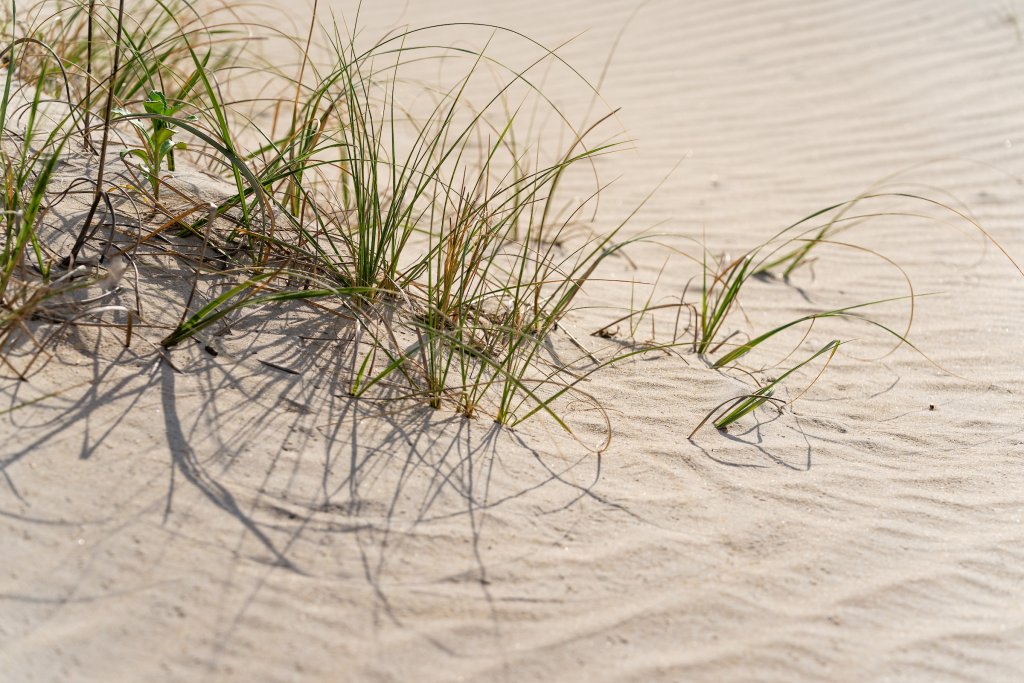Ahhh, sand, such a seemingly simple beach pleasure. Something warm and clean to sink our bare feet into and sift our fingers through. A marvel of cohesion to pile up into shapes limited only by our imagination. The ultimate playground and resting place.
Simple it may seem, but this basic Northern Outer Banks ingredient is a complex substance. Those little grains that end up everywhere from our snacks to our car seats to our crisp clean sheets are actually the final chapter in an epic journey.
Barrier Islands and Natural Sand Dunes
The Outer Banks are not just any stretch of coastline — they are part of a fascinating formation called a barrier island. These narrow strips of land are made almost entirely of sand and run parallel to the shore, separated from the mainland by sounds and marshes. The Outer Banks barrier islands are shifting, ever-changing landforms affected by wind, waves and tides.
In a land formed by sand, it’s not surprising to find an abundance of sand dunes. The Outer Banks has areas of natural, Sahara-like sand dunes called medanos, massive asymmetrical shifting hills of sand that stretch far and wide across the landscape.
The Outer Banks medano most people are familiar with is Jockeys Ridge. On The Northern Outer Banks, these giant migratory dunes can be seen in Carova at Lewark’s Hill and Penny’s Hill. Because medanos are sparsely vegetated, they are constantly shifting with the wind. In the last century ever-shifting Penny’s Hill and Lewark’s Hill swallowed whole villages on The Northern Outer Banks, including the little villages of Seagull and Penny’s Hill. As the dunes continue to shift, remnants of the village are occasionally uncovered again.

